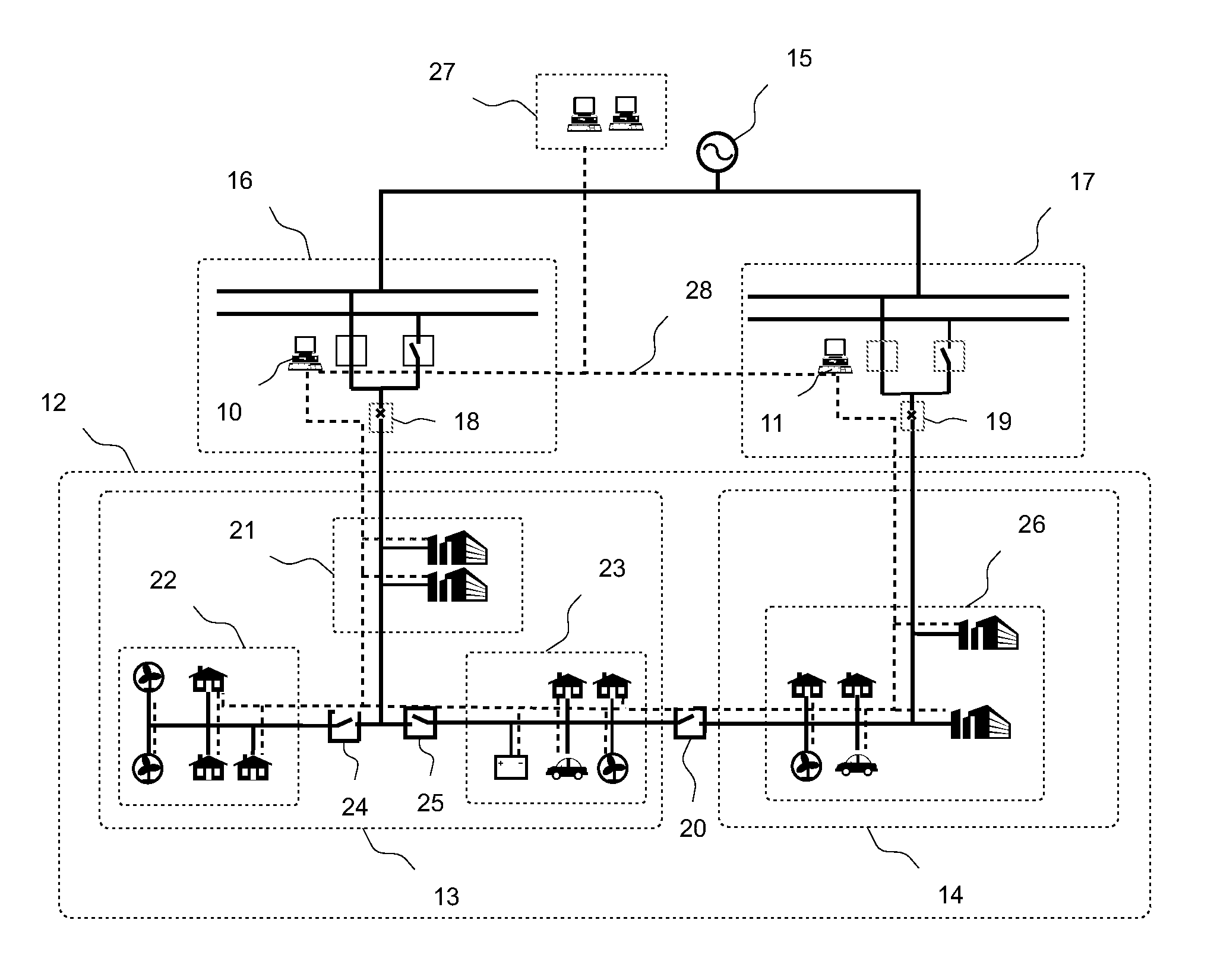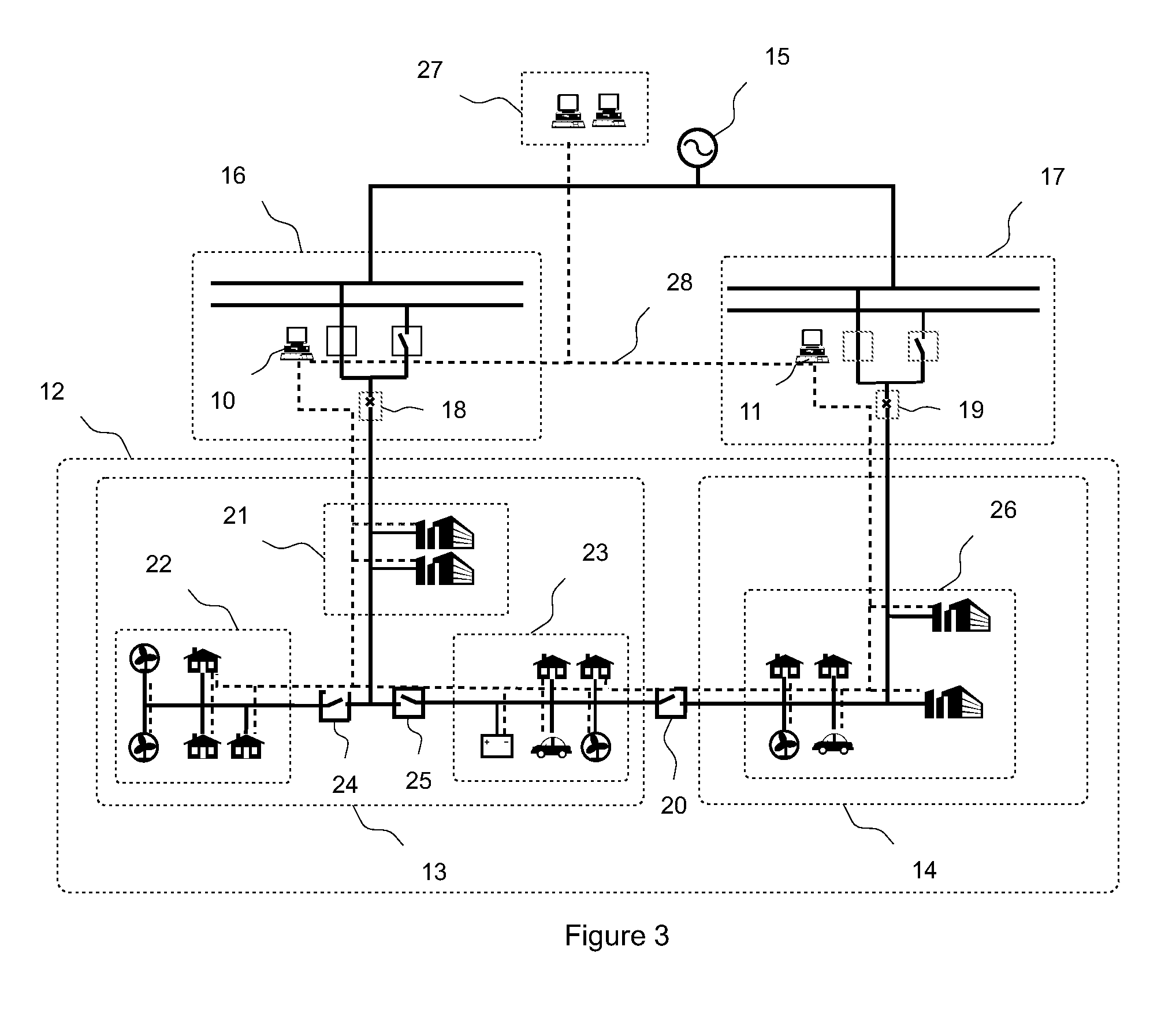Detecting islanding conditions in power networks
a technology of power network and islanding conditions, applied in the field of energy distribution, can solve problems such as inability to realize, stop power generation, and unintentional islanding danger to utility workers
- Summary
- Abstract
- Description
- Claims
- Application Information
AI Technical Summary
Benefits of technology
Problems solved by technology
Method used
Image
Examples
Embodiment Construction
[0045]Exemplary embodiments of the present disclosure alleviate the above-described disadvantages. Exemplary embodiments of the present disclosure provide an automation and control system as well as a method which detect islanding conditions in an electric power network, as described herein.
[0046]An exemplary embodiment of the present disclosure provides a method for detecting islanding conditions in an electric power network supplied by a main grid. The electrical power network is divided into a plurality of sub-networks, wherein the sub-networks include at least one power electrical unit. The sub-networks are separable from each other and from a main grid supplying the network by switching devices.
[0047]Islanding conditions within some or all of the sub-networks can be determined in a decentralized manner. Topological information of the sub-networks can first be determined. Islanding conditions in the sub-networks can then be determined on the basis of the topological information....
PUM
 Login to View More
Login to View More Abstract
Description
Claims
Application Information
 Login to View More
Login to View More - R&D
- Intellectual Property
- Life Sciences
- Materials
- Tech Scout
- Unparalleled Data Quality
- Higher Quality Content
- 60% Fewer Hallucinations
Browse by: Latest US Patents, China's latest patents, Technical Efficacy Thesaurus, Application Domain, Technology Topic, Popular Technical Reports.
© 2025 PatSnap. All rights reserved.Legal|Privacy policy|Modern Slavery Act Transparency Statement|Sitemap|About US| Contact US: help@patsnap.com



